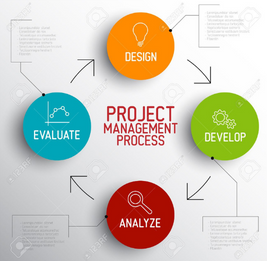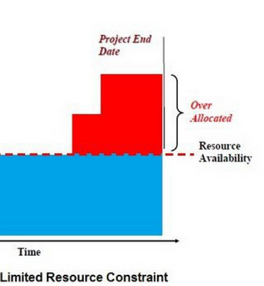Application uses of Microsoft Project.



DESCRIPTION
This course is designed for easy learning of Microsoft projects for Civil Engineering Professionals/Students who are interested in Project Planning, Scheduling, Monitoring, and Controlling of project tasks and budgets.
WHAT YOU WILL LEARN IN THIS COURSE
Concepts of Project, Project Management, and Project Life Cycle, Microsoft Project 2013, and its application, How to use Microsoft Project 2013 for the Project Management field, Creating and Defining projects, Managing Schedule, and Budgeted Cost, Tracking project progress, and making project Status Reports.
PREREQUISITES
Basic Knowledge of Project Management.
WHO THIS COURES IS FOR
Civil Engineering Students, Engineering Graduate, and others working in the project field, Professionals, Managers, Supervisors.
COURSE OUTLINE
What is Project and Project management?
What is Project Life Cycle?
History of Project Management
What is MS Project & History of MS Project?
Launching or Start of MS Project?
Introduction to the MS Project
Understanding the MS Project user interface, ribbon in the Project window, Using Common Views, switch between views.
Understanding the MS Project user interface, ribbon in the Project window, Using Common Views, switch between views.
Creating a Project
Creating a New Project, Saving your Project, Project Information: Project Start Date, Project Finish Date, Schedule from, Selecting the Project Calendar: Standard, 24 Hours, Night Shift.
Creating a New Project, Saving your Project, Project Information: Project Start Date, Project Finish Date, Schedule from, Selecting the Project Calendar: Standard, 24 Hours, Night Shift.
Calendars
Creating a New Project Calendar, Adjusting Working Hours, Edit Work Weeks, Adjusting Working Days, Exception.
Creating a New Project Calendar, Adjusting Working Hours, Edit Work Weeks, Adjusting Working Days, Exception.
Tasks
Entering Tasks, Estimating Task Duration, Elapsed duration, Entering a Milestone, Creating Recurring Tasks, Copy and pasting a task, Inserting and Deleting a Task, Mark a task as inactive, Delete a task, Using the Task Information Dialog Box, Using Task Notes.
Entering Tasks, Estimating Task Duration, Elapsed duration, Entering a Milestone, Creating Recurring Tasks, Copy and pasting a task, Inserting and Deleting a Task, Mark a task as inactive, Delete a task, Using the Task Information Dialog Box, Using Task Notes.
Creating Relationships
Predecessors, Successors, Relationship Types: Finish-to-Start (FS), Start-to-Start (SS), Finish-to-Finish (FF), Start-to-Finish (SF), Relationships with Lead and Lag, View Relationships in the Gantt chart.
Predecessors, Successors, Relationship Types: Finish-to-Start (FS), Start-to-Start (SS), Finish-to-Finish (FF), Start-to-Finish (SF), Relationships with Lead and Lag, View Relationships in the Gantt chart.
Scheduling
Manually scheduled tasks, Automatically scheduled tasks, Scheduling a Project, Critical Path, Early Start, Early Finish, Late Start, Late Finish, Total Float, and Project Duration.
Manually scheduled tasks, Automatically scheduled tasks, Scheduling a Project, Critical Path, Early Start, Early Finish, Late Start, Late Finish, Total Float, and Project Duration.
Resources and Costs
Open Resource Sheet view, Entering People Resources, Entering Equipment Resources, Entering Material Resources, Using Resource Notes, Resource Price, Material Unit, Resource calendar, Assigning Resources to the task, Specifying Pay Rates for Different Dates, Budgeted Total cost of the Project, Identifying Resource Over allocation, Balancing Resource Over allocations Manually, Balancing Resource Over allocations Automatically.
Open Resource Sheet view, Entering People Resources, Entering Equipment Resources, Entering Material Resources, Using Resource Notes, Resource Price, Material Unit, Resource calendar, Assigning Resources to the task, Specifying Pay Rates for Different Dates, Budgeted Total cost of the Project, Identifying Resource Over allocation, Balancing Resource Over allocations Manually, Balancing Resource Over allocations Automatically.
Constraints
Flexible: As Late As Possible, As Soon As Possible, Moderate: Finish No Earlier Than, Finish No Later Than, Start No Earlier Than, Start No Later Than, Inflexible: Must Finish On, Must Start On.
Flexible: As Late As Possible, As Soon As Possible, Moderate: Finish No Earlier Than, Finish No Later Than, Start No Earlier Than, Start No Later Than, Inflexible: Must Finish On, Must Start On.
Base lining and Updating a Project
Saving a Baseline Plan, Displaying Baseline Bars, Updating the entire project, Updating Task Actual Values, Updating Task Completion Percentage, Updating Actual Costs, Checking Duration Variance, and Checking Cost.
Saving a Baseline Plan, Displaying Baseline Bars, Updating the entire project, Updating Task Actual Values, Updating Task Completion Percentage, Updating Actual Costs, Checking Duration Variance, and Checking Cost.
Earned Value Analysis
Planned Value Cost (BCWS), Earned Value Cost (BCWP), Actual Cost (ACWP), Schedule Variance (SV), Schedule Performance Index (SPI), Cost variance (CV), and Cost Performance Index (CPI).
Planned Value Cost (BCWS), Earned Value Cost (BCWP), Actual Cost (ACWP), Schedule Variance (SV), Schedule Performance Index (SPI), Cost variance (CV), and Cost Performance Index (CPI).

